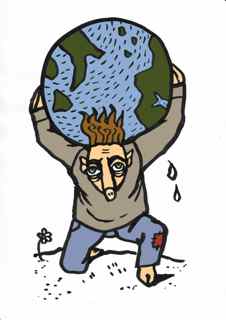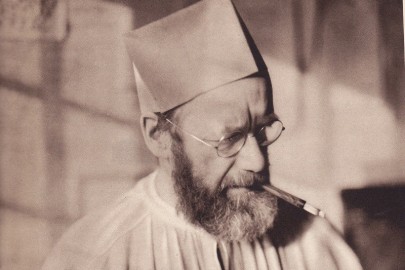
The horse is a singularly beautiful animal. But will we always prize its artistic representation?
I established my literary fame, aged 13, by writing an essay at school on the theme of a job I would not like to do. I chose jockey. I’m not sure, with 30 years’ experience, if I would still least want to be a jockey (there are clearly less appetising jobs, and anyway I now envy the jockey his bodily lightness). But it remains true that I am as little interested in the horse as cultural object as I am in just about anything.
It may be that the source of my distaste is horse-worlds quite as much as it is horses. The horse, like the monarchy whose credibility is in some sense sustained by it, is no longer central to our culture, although this is obscured because its displacement is fairly recent. And in consequence, also like the monarchy, it is only available as an aesthetic object to those of a conservative, archaising, hence of course deplorable sensibility.
But it not merely a question of cultural placement: the horse itself is an ongoing oddity. What is a horse but the vent of alien dimensions? Cormac McCarthy, simultaneously paraphrasing and correcting Wittgenstein, has a line in All the Pretty Horses about the breath from a horse’s nostrils being like news from another world. If a horse could speak, in other words, your brains would fry.
This is not how the Renaissance saw the horse. For the men and women of the Renaissance, in common with the men and women of many cultures, the horse was not only a thing of value or veneration, but an object of high aesthetic regard, and perhaps the highest: it was the aspiration of many quattrocento artists to produce an equestrian statue in bronze.
This was an aspiration, it should be said, that was rarely concluded. Bronze horsemen were colossal investments, and generally not indulged. Casting a life-sized statue of a horse and riders was in the fifteenth century an engineering challenge akin to the building of a dreadnought: its cost and difficulty would be deliberated and usually rejected at the highest levels of government.
The subjects of equestrian statues were condottiere, the great ungovernable mercenary generals of the age. Donatello produced one of Gattamelata, in Padua; in Venice Verrocchio produced one of Colleoni. Leonardo da Vinci spent years trying to persuade Ludovico Sforza to have one done of himself, without success.
But a bronze horse was an intellectual endeavour only from the engineering standpoint; artists of the quattrocento were far more concerned, as a rule, with the intellectual rigours of disegno, drawing or design, through which by the power of their brains they represented three dimensions in two. While sculpture could hardly be said to be in abeyance, painting and, by the mid fifteenth century, drawing, was the elite art form, and many Renaissance paintings announced their credentials with the backside of a foreshortened horse.
Thus while Leonardo did not manage to convince Sforza to allow him to make an equestrian statue he did produce numerous drawings, in preparation both for the statue and for his great incomplete fresco, the Battle of Anghiari, drawings which seem as fascinated by the energetic harmony between horse and rider – each subject to the governance of the other, but together ungovernable, and it might be said, free – as they do by the animal’s singular beauty.
And while I do not, to repeat, like or trust the animals, I can see, looking at the Leonardo in particular, that we are beginning to lose a certain mental shape. The horse, like the hunting dog, is a beast to which much cultural and aesthetic weight is necessarily attached; we still, just, manage to read the horse fluently. That might not always be so.
I can imagine a time when Donatello’s Gattamelata will be dug from the ruins of Padua, perhaps after being struck by a plough, and in its Aztec strangeness will bear comparison with the Assyrian five-legged winged bulls chiselled from the ruins of Nineveh and Assur in the nineteenth century: deeply improbable yet oneirically convincing; menacing, tyrannical, yet beautiful.













Wonderful as ever Toby
Although I am beginning to think that all the signs point to the fact that I’m going to have to get a larger than life sized bronze statue of myself on a horse erected on my front drive.
An essay in Bernard Knox’s Essays Ancient and Modern cites E.M.Forster as the source for a story about the Italian pavilion at theParis Exhibition of 1937:
“… the equestrian statue of Mussolini, a heroic nude, which soon had to be moved out of the enrance court and fenced off. French workers had taken to giving one of their number a leg up so that he could report to the world what, if anything, was to be seen between Il Duce’s marble legs.”
Washington has many equestrian statues, all that I can think of clothed–mostly they are of (American) Civil War generals, though the nearest one to my house is of a pioneering Methodist bishop. They are not especially distinguished as sculpture.
Fascinating in all kinds of ways. I wonder who was the last British notable to be commemorated on horseback? There’s Earl Haig in Whitehall and Edward VII down by St James’s Park — but after that? It’s hard to imagine an equestrian statue of any current political figure — David Cameron on Raisa, perhaps?
I’m not sure there’s any dearth of modern statues of horses, they just all seem to be riderless. For example that rather beautiful driftwood statue down at the Eden Project, also the massive Mark Wallinger horse planned for Ebbfleet, Kent. There seem to be at least three lifesize statues of Red Rum — Aintree, Newmarket, Southport — and it strikes me that could easily make him the most statued Briton of the past 30 years. (I was going to write 50 but on second thoughts there seem to be statues of John Lennon all over the place — though none I think on horseback.)
Happy the land that has no need of heroes on horseback. But if we do another another I’d guess Princess Anne would be the likeliest candidate.
My favourite horsey statue is G F Watts’ improbably large Physical Energy, in Kensington Gardens, which seems to me to capture both the elegant beauty and the mechanical power of the beast.
I don’t feel comfortable around horses either, they’re too big. But there are few sights more exhilarating than a lot of massive racehorses thundering past.